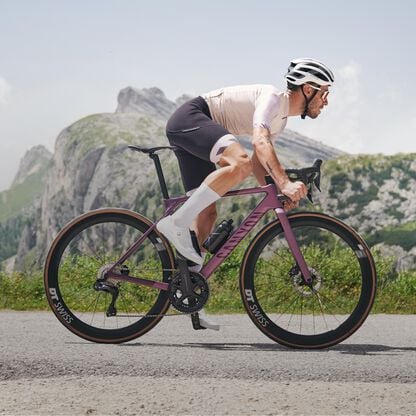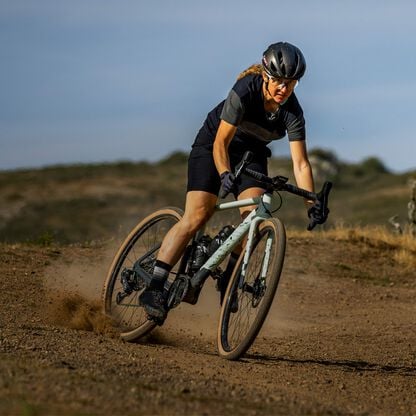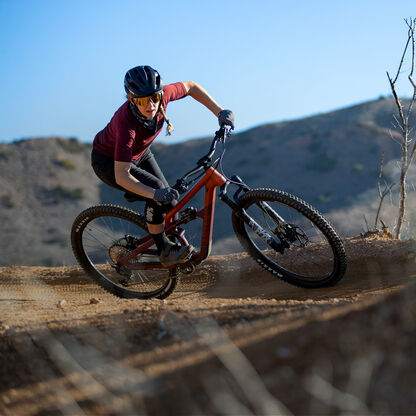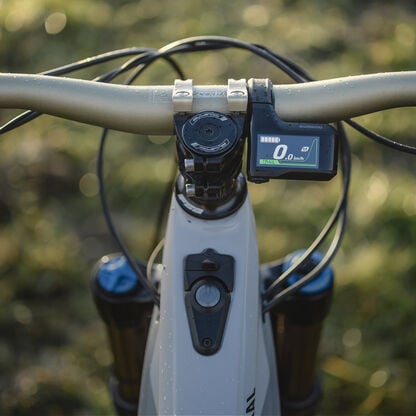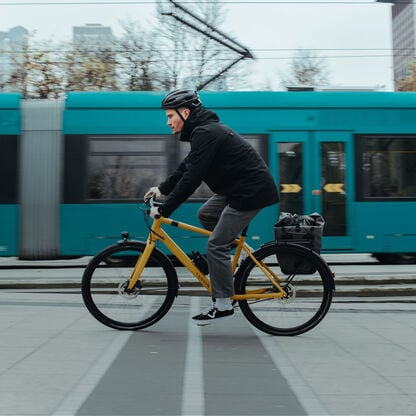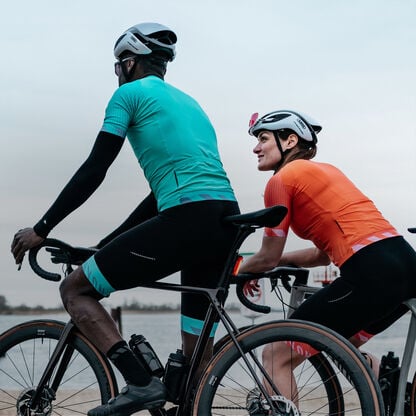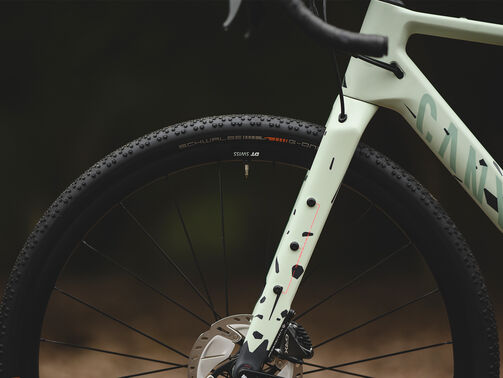Be seen and stay safe: Choosing the right bike lights for winter
Learn how to enhance your safety while cycling in winter.


Contents
Short days and low light conditions mean lights are necessary to get around safely. Here, we take a look at some of the options.
Why bike lights are essential for winter cycling
Riding in winter often means riding in gloomy conditions or in the dark. Shorter daylight hours over the winter months can catch you off-guard if you nip out for a little ride and end up taking longer than you thought.
The laws in most countries dictate that you must have lights mounted to your bike between sunset and sunrise. You should check your government’s website for the rules in your country.
Some bike lights are waterproof, which is important if you cycle in all weather conditions. If your light isn’t water-resistant, consider mounting mudguards to reduce the spray from the road.
Some also bike lights have smart features integrated such as traffic detection. When a car approaches from behind, the rear light glows brighter to ensure you’re seen. It might seem superfluous but if road cycling is your jam, features like these are appealing.
Check out our winter safety cycling gear to stay safe and visible on the road.
Front bike lights: lighting your path
There are two reasons for using bike lights particularly in winter: to see and to be seen. A bike light that you use to see should be bright (see the section on lumens below) and have a focused beam to light the road or trail ahead. A bike light to be seen by other road users should have various modes and brightness settings.
Most front bike lights are mounted to the handlebar with a plastic or metal mount. The mount is then secured with heavy duty rubber bands or are secured with bolts.
In Germany, bicycle lights with an StVZO certification have a flattened beam to avoid blinding oncoming vehicles. It’s important that road bike lights must adhere to these standards.

Rear lights: Stay visible to others
Unlike front lights, rear bike lights have just one purpose, and that’s to be seen by other road users. Rear lights are typically mounted to the seatpost with some opting to add supplementary lights on the seat stays too.
Rear lights will glow or flash red just like the rear lights on other vehicles. These lights usually have various modes, and some even have variable brightness.
USB rechargeable vs battery bike lights
How long the battery can power your light is important. A dead light is no good if you haven’t reached your destination.
The longer the battery life, the bigger and heavier the light is likely to be. Some lights use external battery packs which can be mounted to the top tube, while others have internal batteries.
The vast majority of bike lights are rechargeable. Simply take the light off the bike and charge it via USB. This is a particularly useful feature if you’re commuting – simply charge your light via your laptop while you work, ready for the ride home.
How many lumens do I need?
Lumens is the unit of measure given to the amount of light emitted from a source. The higher the number, the brighter the light.
If you’re riding in towns and cities where streetlights guide you around, you won’t need as many lumens as someone taking a back road in the middle of nowhere.
Around 200 lumens is sufficient for urban riding and commuting. If your route takes you on unlit roads, look for a light with 400 lumens or more. Mountain bikers will need around 1500 lumens for proper off-road mountain biking in the woods.
You will need to look at the lumens alongside battery life. If a light can only project 200 lumens for half an hour and your commute is 45 minutes, the light won’t be very useful to you.
Additional lighting options for winter
Helmet-mounted lights
Beyond bike-mounted lights, one of the best places to position a light is on your helmet. High off the road and in full view for other road users, a rear-facing helmet-mounted light will help ensure you’re seen from behind by any vehicle approaching from the rear.
A front-facing light can also greatly aid your own vision when riding in the winter, illuminating your path in the same direction as your vision.

Reflective gear for safe winter cycling
When an object is reflective, it bounces light back towards the source, making it stand out in low light conditions.
Reflective elements on your clothing and gear can boost visibility in low light. Whether that’s a jacket with reflective trim, or a set of reflective stickers on your seatpost or seatstays.
Which is the best bike light for me?
If you’re riding through winter, get a rechargeable bike light that can be used time and time again. Brands like Knog offer sleek looking lights with powerful beams and good battery life. If you want a light that will cope with the most demanding conditions, turn to Lupine who specialise in high-end bike lights with neat mounting systems developed in partnership with Canyon.
Once you’ve got your new bike lights, you can hop in the saddle no matter the time of day.
Did this article help?
Thank you for your feedback
